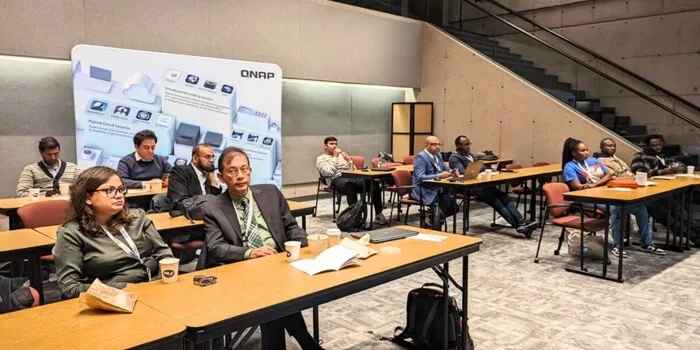When you’re at an international conference, surrounded by the buzz of multiple languages. How do you bridge the gap to ensure everyone’s on the same page?
The magic lies in the live translation, a game-changer in the upbringing of stable communication. Live translation transforms the conference experience by allowing attendees to listen to speeches and presentations in their own language, in real-time. But you might wonder, “How to make a live translation at a conference?”
The process is simpler than you think. Start by hiring professional interpreters fluent in the necessary languages. Equip them with soundproof booths and microphones to relay translations. Attendees can then tune in through wireless headsets or mobile apps.
Fascinated, isn’t it? Stick around as we dive deeper into making live translation at your next conference a resounding success.
The Components of a Conference
The perfect conference does involve juggling several key elements. At the heart of it, you’ve got your venue – the stage where all the action unfolds. It’s not just about finding a big space; it’s about ensuring it’s accessible and resonates with your theme.
Then, there’s the agenda, a carefully curated blend of speakers, workshops, and networking sessions designed to ignite discussions and spark collaborations.
Let’s not forget the technology, from seamless audio-visual setups to live translation services, ensuring everyone’s on the same wavelength.
And in today’s digital age, a conference website acts as your event’s digital handshake. It’s where attendees first meet your conference, getting all the juicy details and registering their interest.
Wrapping it all up, effective marketing and sponsorship strategies spread the word and keep the lights on. Together, these components weave the fabric of a successful conference, creating an unforgettable experience for every participant.
The Importance of Live Translations at a Conference
Amongst the diversity of international conferences, where ideas transcend borders, live translations stand as unsung heroes. They’re not just a feature; they’re a bridge connecting diverse minds. Let’s dive into why they’re so crucial.
Breaking Language Barriers
Imagine a world where language doesn’t limit understanding. That’s what live translations offer at conferences. They ensure everyone, regardless of their native tongue, gets the full picture, creating a truly inclusive environment.
Enhancing Engagement
When attendees understand everything in their language, their engagement skyrockets. It’s like turning a monologue into a dialogue, where every participant feels valued and eager to contribute.
Facilitating Networking
Conferences are networking goldmines. Live translations remove awkward language hurdles, making it easier for attendees to mingle, share ideas, and form lasting connections across cultures.
Increasing Accessibility
Accessibility is key in today’s inclusive world. By accommodating non-native speakers, conferences become more accessible, inviting a broader audience to learn, participate, and share their perspectives.
Essentially, live translations don’t just translate words; they translate ideas, emotions, and innovations, making every conference a richer, more inclusive experience. However, you can choose between TV vs Projector for Conferences to visualize the live translation.
How to Make Live Translation at a Conference?
Have you ever found yourself lost in translation at a multilingual conference? You’re not alone. In today’s global village, conferences often resemble a mini United Nations, with attendees hailing from every corner of the globe.
This diversity, while enriching, can pose significant communication challenges. So, how do we bridge this linguistic divide?
The key is in live translation, a powerful tool that ensures every participant, regardless of their native language, can fully engage with the event’s content. “How to make a live translation at a conference?” you might ask.
Well, it’s all about planning, technology, and skilled professionals. Let’s break down the process into manageable steps to see how you can seamlessly integrate live translation into your next conference, ensuring a smooth and inclusive experience for all attendees.
Step 1: Assess Your Needs
First of all, determine the linguistic landscape of your conference. Which languages are your attendees fluent in? Identifying the most spoken languages among your audience is crucial to tailoring your live translation services effectively.
Step 2: Hire Professional Interpreters
Quality matters and that’s why, hiring professional interpreters is one of the key steps for live translation at conferences. Hire experienced interpreters who are not only fluent in the required languages but also familiar with the conference’s subject matter. Their expertise ensures accurate, context-sensitive translations.
Step 3: Equip with the Right Technology
Invest in state-of-the-art translation equipment. This includes soundproof booths for interpreters, high-quality microphones, and wireless headsets for attendees. For a more modern approach, consider mobile apps that offer real-time translation directly to users’ smartphones.
Step 4: Test Your Setup
Nothing dampens the spirit of a conference like technical glitches. Before D-day, conduct thorough tests of your equipment and ensure your interpreters are comfortable with the technology they’ll be using.
Step 5: Educate Your Attendees
Make sure your attendees know how to access the live translation services. Whether it’s through traditional headsets or a cutting-edge app, clear instructions will enhance their experience and encourage wider use of the service.
Step 6: Provide Feedback Channels
After the event, gather feedback from both attendees and interpreters. This will help you understand what worked, and what didn’t, and how you can improve live translation at future conferences.
Live translation might seem like a scary addition to your conference planning checklist, but its impact on inclusivity and engagement is undeniable.
By following these steps, you can create a more accessible and enriching event for all participants, regardless of the language they speak.
Do These Translations Always be Needed for All Conferences?
No, not all conferences require live translations. The need for such services largely depends on the audience and the event’s scope. Let’s break down when you might skip the live translation setup.
Audience Homogeneity
If your conference attendees predominantly speak the same language and there’s little chance of linguistic diversity, then live translations might not be necessary. Tailoring the event to the common language ensures everyone’s on the same page without the need for translation.
Event Scale and Scope
Smaller, more intimate gatherings or those with a very specific focus might not benefit from live translations. If the event caters to a niche audience with shared language skills, the additional investment in translation services may not add significant value.
Cost-Benefit Analysis
Live translations can be a significant investment. For some events, the cost might outweigh the benefits, especially if the anticipated return on investment, in terms of audience engagement or inclusivity, is low.
Fundamentally, while live translations can greatly enhance accessibility and engagement in diverse, large-scale conferences, they’re not a one-size-fits-all solution.
Evaluating the specific needs and context of your event is key to determining whether to include them. Meanwhile, quality types of microphones for conferences are essential to let the speaker, presenter, and any other holding the mic reach the audience with proper clarity.
When Should You Have a Live Translation for a Conference?
Within the dynamic global conference milieu of today, ensuring every voice is heard and understood isn’t just nice—it’s essential. Live translation becomes a must-have in certain scenarios, turning a gathering from merely international to genuinely inclusive.
Let’s explore when you absolutely need to bring live translation into your conference planning.
International Audience
When your conference guest list reads like a roll call of the United Nations, live translation isn’t optional; it’s critical. Ensuring that attendees from across the globe can engage in their native language is key to promoting an inclusive environment where ideas flourish.
Diverse Linguistic Groups
If your event targets diverse linguistic groups, particularly when discussing complex or technical subjects, live translation ensures that all participants grasp the nuances of the presentations and discussions, facilitating deeper understanding and engagement.
High-Stakes Conferences
In scenarios where decisions made have significant implications—be it in politics, global health, or international trade—misunderstandings aren’t just inconvenient; they’re potentially hazardous. Live translation mitigates these risks, ensuring clarity and precision in communication.
Promoting Global Collaboration
Conferences aiming to promote cross-cultural dialogue and collaboration must prioritize live translation. It breaks down barriers, allowing for the free exchange of ideas and innovations, driving forward global progress.
In these contexts, live translation isn’t just a feature—it’s the backbone of successful, impactful, and truly global conferencing.
Frequently Asked Questions
The world of conferences is a really exquisite place to dive in, one might wonder how to tackle the language barrier effectively. Lucky for you, we’ve got the scoop on some of the best tools out there to make live translation a breeze. Let’s answer some frequently asked questions to get you geared up for your next multilingual event!
What Is the Software for Live Translation at Meetings?
Wordly is your go-to. It offers real-time translation for meetings, ensuring that everyone’s on the same page—literally. It’s a game-changer for making your meetings more inclusive and engaging.
Is There a Live Translator App?
Absolutely, and Translate Me stands out. It’s a mobile app designed to facilitate live conversation translation, making it perfect for networking at conferences or even casual chats.
What Is the Best Online Translation Tool?
Google Translate takes the crown for its versatility and widespread use. For website translation, both Google Translate and TranslatePress are top picks, with Bing Translator, Yandex Translate, IBM Watson Language Translator, and ImTranslator also offering robust solutions.
How Can You Ensure High-Quality Live Translation at A Conference?
Investing in professional interpreters and high-quality translation equipment is key. Make sure the interpreters have expertise in the conference’s subject matter for accurate and context-aware translations.
What Are the Best Practices for Integrating Live Translation Into a Conference?
Start by assessing your audience’s language needs early on. Then, use a combination of professional interpreters and reliable translation technology like Wordly or Translate Me, ensuring your setup is tested thoroughly before the event kicks off.
With these tools and tips, you’re well on your way to hosting a conference that’s as linguistically diverse as it is engaging.
Final Thought
Tying up loose ends, we’ve safely guided you through the essentials of enriching your conference with the magic of live translation. Starting with assessing linguistic needs to hiring adept interpreters and choosing the right tech, it’s clear that meticulous planning is key.
“How to make a live translation at a conference?” boils down to the perception of your audience, investing in quality translation services, and ensuring all technical setups are foolproof.
To elevate your conference further, embrace professional interpreters and modern apps like Wordly and Translate Me. Remember, the goal is to create an inclusive, engaging space where language barriers vanish, making every attendee feel valued and heard.








